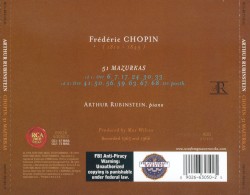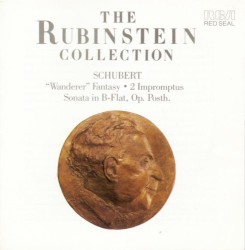I’m pretty sure I have this release, as the cover art, bar code, label, and catalog number match the disc I’m holding. But I’m confused by the annotation and by the title. Trying to go through the edit history… did not help much.
The annotation … is not useful. Beyond telling me that I got the wrong release (which, of course, there is no way to know without knowing what I’m holding), It seems to be saying there is both a Rubinstein Collection and an Arthur Rubinstein collection, and those are different (because of a different mastering). And then something about the edit history being wrong (uh?) Further, I open the album booklet (the one I’m holding) and it has a title page, which says “The Rubinstein Collection Frédéric Chopin (1810 – 1849) 19 Nocturnes”. So this is a RC disc. Then I look through, turn to the back page, and it tells me “(big bold small caps)The Arthur Rubinstein Collection(newline)(normal font)brings together all of his approved,…” So it appears Sony considers putting the “the” or not a typographic choice.
It looks like maybe part of this is @jalexstark (who unfortunately doesn’t seem to be around anymore, so hard to ask) being confused by one MB recording representing multiple masterings. Or maybe by the optional “the”.
So… it looks like I should:
- change the annotation to something along the lines of “This release is the 1999 mastering; there is a 2010 as well, see [link] (if I can find it).”
- change the release & release group title to “19 Nocturnes” per the CSG (though the current release group title is, errr, a good reflection of my feelings
 )
) - fix some of the track titles (e.g., lowercase “op.”)
- possibly, add another release to the release group for the US release (which I think I probably have since the back says its distributed by Sony in New York). But I can’t find any actual differences, so this seems pointless.
Ping @loujin as you’re in the edit history.


